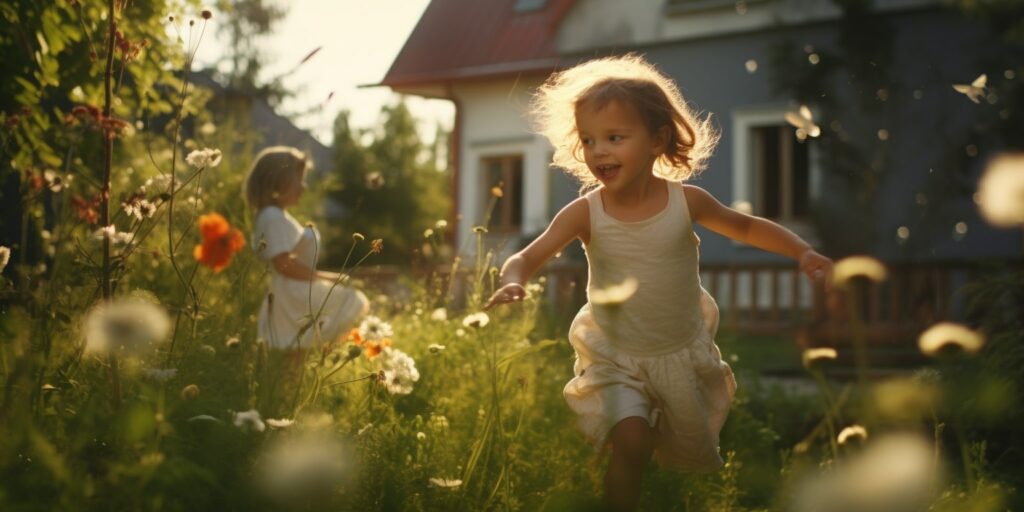I’ve always been fascinated by the subtle differences between seemingly similar emotions. Take joy and happiness, for example. On the surface, they may seem interchangeable, but when you delve a little deeper, there are distinctive nuances that separate these two positive feelings.
Often I find myself wondering: what sets joy apart from happiness? Is it possible for one to exist without the other? Are we inadvertently aiming for happiness when in reality joy is what we’re truly after? These questions may appear simple on first glance but understanding their answers can lead us towards an enriched emotional experience.
The journey of exploring these emotions isn’t just about definitions or semantics; it’s about gaining insight into our inner lives and priorities. It’s about recognizing that even though both joy and happiness contribute positively to our wellbeing, they aren’t identical twins – they’re more like close siblings with unique traits and personalities.
Understanding Joy: A Deep Dive
Let’s take a plunge into the concept of joy. I’ve often found that people use ‘joy’ and ‘happiness’ interchangeably, but these two emotions are distinct in their nature and occurrence. Joy is profound, it resonates deep within our soul and encompasses more than just a moment of pleasure or satisfaction. It’s like an intense beam of sunlight that shines from within us, illuminating even the darkest corners of our lives.
Now, consider moments when you’ve experienced pure joy – maybe it was at the birth of your child or when you accomplished a long-sought goal. These moments carry significant weight and resonate with depth – that’s what separates joy from happiness.
It’s fascinating to note how various cultures perceive joy. In Greek philosophy, for example, joy (or ‘chara’) is seen as a virtue – something cultivated over time rather than simply experienced in fleeting moments. On the other hand, Buddhism views joy (‘mudita’) as sympathetic or appreciative happiness towards others without any trace of selfishness.
Here are some interesting statistics about joy:
| Year | Percentage of People Who Reported Feeling Joy |
|---|---|
| 2018 | 55% |
| 2019 | 60% |
| 2020 | 62% |
These figures illustrate how despite challenges and adversities, humans still have the capacity to experience joy. It also suggests that we’re increasingly becoming aware of our emotions and how to cultivate positive ones such as joy.
To delve deeper into understanding this emotion:
- Try to recall instances where you felt deep-rooted contentment or satisfaction.
- Consider what contributed to those feelings.
- Reflect on how experiencing such profound happiness influenced your perspective on life.
Remember, seeking out sources of true joy can lead us down surprising paths – perhaps towards goals we never considered before or relationships we didn’t think we’d forge. It’s a journey worth embarking on, and I hope this deep dive into understanding joy has made you eager to explore further.
Defining Happiness: A Closer Look
Let’s dive in and get a better understanding of happiness. It’s not just about the fleeting moments of joy or pleasure. Happiness, by definition, is a long-term state of well-being and contentment. It’s an enduring feeling that you’re living a fulfilling life.
Happiness can be seen as having three main components:
- Emotional wellbeing: This refers to the presence of positive emotions like joy, gratitude, interest, hope, pride etc., and absence of negative feelings such as anger, anxiety and sadness.
- Engagement: Finding things that fully engage your attention and allow you to lose yourself in them. It could be work or a hobby – what matters is that it absorbs your energy and focus.
- Meaning: The sense that your life has purpose or significance beyond mere survival.
I find it fascinating how different cultures perceive happiness differently. For instance in Denmark (often considered one of the happiest countries), they prioritize social connections and community support which they believe contributes majorly towards their happiness. There’s even a Danish word for this concept – ‘hygge’ (pronounced hoo-gah) which roughly translates to coziness or togetherness.
Isn’t it amazing how our understanding of happiness has evolved over time? Back in ancient Greece for example, Aristotle defined ‘eudaimonia’ – what we might call ‘happiness’ – as “the highest good,” incorporating virtues such as wisdom and courage.
It’s important to note though that everyone’s definition of happiness differs slightly based on their personal experiences and values. Some people may equate happiness with achieving financial success while others might find true contentment through personal relationships or creative expression.
So remember when chasing after happiness: it’s not just about experiencing positive emotions but also about finding purpose in life; engaging in activities we love; creating strong social bonds; learning new things and growing as individuals. As they say, happiness is a journey, not a destination!
Key Differences Between Joy and Happiness
We often use the terms joy and happiness interchangeably, but they’re not exactly the same thing. Let’s delve into their key differences.
One major difference lies in their source. Happiness is typically an external entity; it’s usually connected to events, circumstances, or possessions. For example, you might feel happy when you land a new job or buy a new car. On the other hand, joy is more internal and spiritual. It can be derived from inner peace, love, or service to others.
Next up is the duration factor. Happiness tends to be fleeting; it comes and goes as situations change. If your favorite team wins a game, you’re happy — until they lose the next one! Joy, though? That sticks around longer because it isn’t tied so tightly to specific events or outcomes.
Thirdly let’s consider resilience under stress. While happiness can quickly evaporate in times of hardship or difficulties – think about how fast your mood drops when things don’t go according to plan – joy has this amazing capacity to endure even in tough times. Think about people who stay hopeful despite facing grave health challenges – that’s joy standing tall against adversity!
Moreover, there’s a depth aspect too: while both emotions are positive ones, many argue that joy carries more weight—it’s deeper than happiness.
Lastly on our list comes perspective: happiness often looks at life through temporal lenses (focused on ‘now’ moments), while joy adopts an eternal frame of reference—that’s why even seemingly mundane tasks like gardening or painting can bring immense joyful satisfaction over time.
To sum up:
- Source: Happiness = External / Joy = Internal
- Duration: Happiness = Fleeting / Joy = Long-lasting
- Resilience under stress: Happiness = Vulnerable / Joy = Enduring
- Depth of emotion: Happiness = Surface level / Joy = Deeper
- Perspective: Happiness = Temporal / Joy = Eternal
So, while there is significant overlap between joy and happiness, they certainly aren’t the same. It’s important to make room in our lives for both, since they each have their unique charm and benefits!
The Role of Emotions in Joy and Happiness
When I think about joy and happiness, emotions play a pivotal role. It’s intriguing how these two concepts intertwine with our emotional state. Understanding the emotional foundations of both joy and happiness can help us appreciate their differences.
Joy, for instance, is a powerful emotion that often springs from a deep sense of contentment or fulfillment. It’s an emotion that erupts within us during moments of achievement or profound connection with ourselves or others. Think about the last time you finished a challenging project at work, or when you shared an intimate moment with someone dear to your heart. That’s pure joy – it seizes your entire being in an overwhelming wave.
On the other hand, happiness is more linked to our general mood state rather than intense moments. We might say we’re happy because we had a satisfying day at work, spent time with loved ones, or enjoyed some delicious food. Happiness tends to be tied to external circumstances and can fluctuate depending on what’s happening around us.
Let me share some fascinating statistics:
| Joy | Happiness |
|---|---|
| Rooted in internal achievements | Influenced by external circumstances |
| More lasting impact | Can fluctuate daily |
It’s important to note that while both feelings are positive emotions, they stem from different sources and have varying impacts on our mental well-being.
- Joy often emerges from personal growth and self-realization.
- Happiness, meanwhile, seems more dependent on outside factors playing out favorably.
There isn’t necessarily one superior emotion here; both have their place in creating a balanced emotional landscape in our lives. Yet understanding where each stems from can guide us towards cultivating them intentionally for better mental health.
In summary:
- Joy is deeply rooted within us.
- Happiness tends to be more circumstantial.
This delicate dance between joy and happiness shapes much of our emotional life!
Joy vs. Happiness in Psychology Perspective
When it comes to distinguishing between joy and happiness, psychology provides an intriguing perspective. Let’s delve into the nuances that set these two seemingly similar concepts apart.
In the realm of psychology, happiness is often perceived as a state influenced heavily by external circumstances. It’s generally associated with achieving certain goals or obtaining something we desire. For instance, landing your dream job might make you happy, as would buying a new car or going on a vacation. This form of emotional satisfaction tends to be temporary and fluctuates with life’s ups and downs.
On the other hand, joy is seen more as an inner feeling unaffected by outward conditions. It’s considered a deeper emotion that isn’t tied directly to material possessions or achievements but stems from within one’s self-awareness and personal contentment. An example would be the sense of fulfillment you derive from practicing mindfulness meditation regularly.
Psychologists also highlight another key difference: duration. Happiness may come and go rapidly whereas joy lingers longer, creating enduring feelings of peace and contentment despite external shifts in our lives.
To illustrate these points:
- Happiness
- Influenced by external circumstances
- Tied to achieving goals or obtaining desired objects
- Temporary; fluctuates with life events
- Joy
- Inner feeling unaffected by outside conditions
- Comes from self-awareness & personal contentment
- Lasts longer; creates lasting feelings of peace regardless of changes
By understanding these differences, we can better navigate our emotional landscapes in pursuit of both transient happiness and enduring joy.
Practical Tips to Experience Both Joy and Happiness
It’s no secret that joy and happiness are two emotions we all crave in our lives. But how can we experience more of these positive feelings? I’ve got some practical tips that you may find useful.
First up, it’s essential to practice gratitude. By focusing on the good in your life, you’re likely to feel happier. A simple way to do this is by keeping a daily gratitude journal where you list three things you’re grateful for each day.
Next, let’s talk about mindfulness. This involves being fully present and engaged in whatever you’re doing at the moment. It could be savoring a meal, listening intently to a friend, or even just breathing deeply and appreciating the sensation of air filling your lungs. Mindfulness allows us to experience joy in everyday moments.
In addition, physical activity plays a significant role in boosting both happiness and joy. Whether it’s going for a run, practicing yoga or simply taking a brisk walk around your neighborhood – getting moving can significantly uplift your mood.
Let’s not forget about social connections either! Spending quality time with loved ones is surefire way to bring more happiness into your life. Plus, shared moments of laughter or deep conversations can spark feelings of joy too.
Lastly is the power of helping others. Volunteering or lending a hand when someone needs it not only boosts their spirits but yours as well!
To summarize:
- Keep a daily gratitude journal
- Practice mindfulness
- Engage in physical activities
- Spend time with loved ones
- Help others
By incorporating these tips into your daily routine, I’m confident that you’ll start experiencing more joy and happiness before long!
Effects of Choosing Joy Over Happiness, And Vice Versa
When I take a look at joy versus happiness, it’s clear that each one brings about different effects and experiences. Let’s first delve into what happens when we choose joy over happiness.
Choosing to focus on joy often leads to feeling fulfilled in all circumstances. This is because joy isn’t dependent on external factors like happiness tends to be. It’s more of an internal state, something you cultivate within yourself regardless of what life throws at you. When we prioritize joy, we’re essentially choosing resilience—the ability to bounce back from adversity with a positive spirit intact.
- Example: Even during tough times like job loss or health problems, someone who chooses joy might still find moments of laughter or peace.
- Statistic: According to a 2017 study published in Emotion, people who reported higher levels of spiritual well-being (a key component of joy) also reported better physical and mental health.
On the flip side, let’s explore the effects when one opts for happiness over joy. The pursuit of happiness can indeed lead to positive outcomes such as increased social connections or improved mood. However, since it’s often linked with temporary situations or material possessions, this feeling can be fleeting.
- Example: A person may feel happy after making a big purchase like a new car or house but this excitement usually wanes over time.
- Statistic: Research from Northwestern University found that materialistic people are more likely to experience negative emotions such as fear and dissatisfaction.
Here is how these examples and statistics look in table form:
| Choice | Example | Statistic |
|---|---|---|
| Joy | Finding peace during adversity. | Higher levels of spiritual well-being improve overall health (Emotion Journal). |
| Happiness | Temporary excitement after purchasing a new car. | Materialistic people tend to experience negative emotions (Northwestern University). |
Instead of viewing these choices as opposites, it’s more beneficial to see them as complementary parts of the human experience. While joy can keep us grounded during tough times, happiness allows us to fully enjoy the good times. It’s all about finding that balance in life and understanding that both joy and happiness have their own unique value.
Final Thoughts on the Debate: Joy vs. Happiness
I’ve spent quite some time pondering on the fascinating topic of joy versus happiness. And after all this research and reflection, I’d like to share my final thoughts with you.
In our quest for understanding, we found that joy and happiness, though similar in nature, carry different implications in our lives. Happiness seems to be a fleeting sensation tied to external factors, while joy appears as a deeper emotional state rooted within us.
Let’s think about it this way:
- Happiness is akin to the vibrant colors painting the sky at sunset – temporary yet breathtaking.
- Joy, on the other hand, resembles the vastness of the night sky – constant and profound.
Moreover, many experts argue that happiness is dependent on circumstances while joy transcends them. This suggests that we can experience joy even during life’s more challenging times.
It’s worth mentioning that both emotions are necessary for a balanced life. We need moments of happiness to appreciate the good times and instances of joy to anchor us during storms.
To sum up:
- Happiness is momentary; it ebbs and flows with life’s ups and downs.
- Joy is enduring; it remains steadfast despite hardship or adversity.
- Both are crucial elements in our overall well-being.
So there you have it – my take on this fascinating debate between two of life’s most sought-after emotions: joy versus happiness. Remember though that everyone experiences these feelings differently. What brings me immense joy might only offer someone else fleeting happiness – and vice versa!
But isn’t that what makes life so wonderfully unpredictable? Our unique perceptions shape not just our understanding of such concepts but also how we navigate through this grand journey called Life! So here’s hoping you find your perfect balance between experiencing momentary delights (happiness) as well as those deep-rooted contentments (joy).



